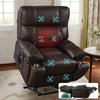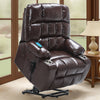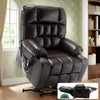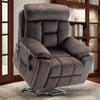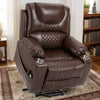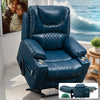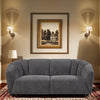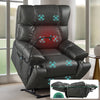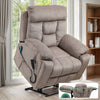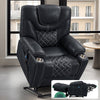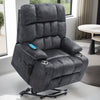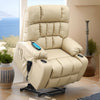Understanding Power Lift Chair Recliners: Features and Benefits
The Mechanism Behind Power Lift Chair Recliners
Power lift chair recliners use a motorized mechanism to raise and tilt forward. This helps users stand up easily. The chair's base lifts, pushing the seat upward and forward. This motion reduces strain on knees and back.
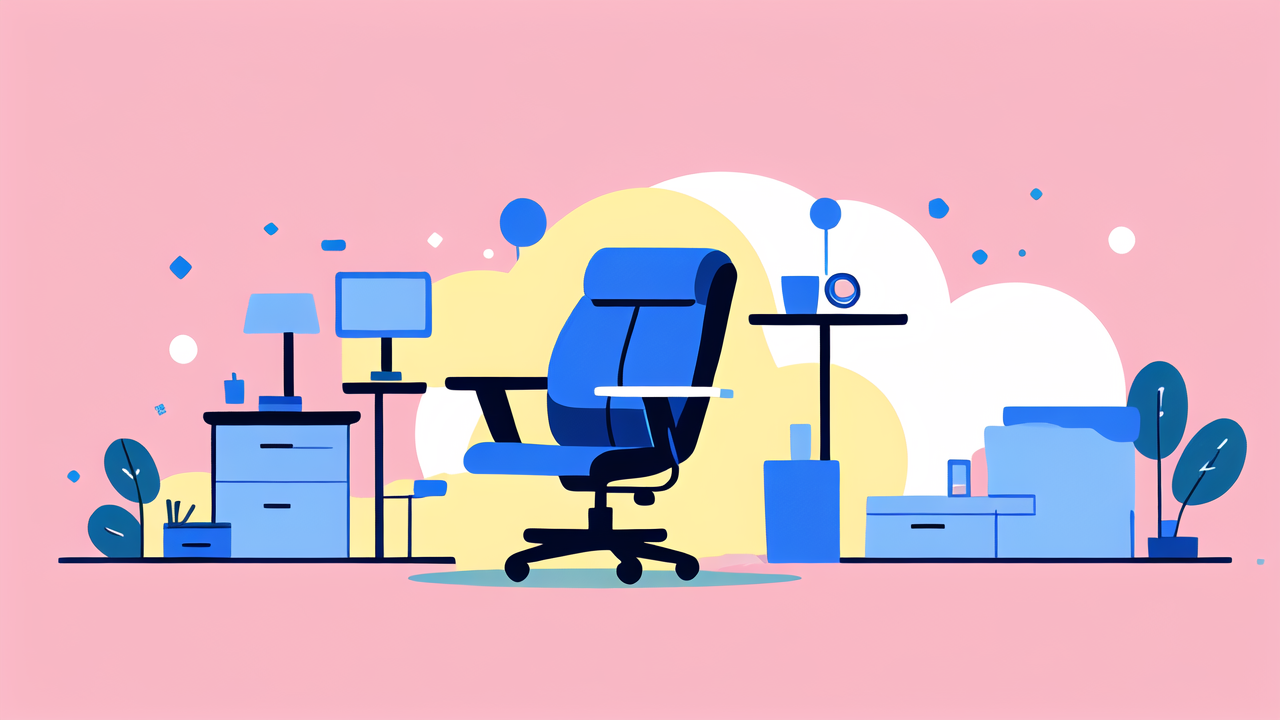
Most models have remote controls for easy operation. Users can adjust the chair's position with a button press. The lifting mechanism is usually powered by electricity. Some models have battery backups for power outages.
These chairs also recline for comfort. The backrest and footrest move independently. This allows for various positions, from sitting upright to fully reclined.
Comparing with Traditional Lift Chairs and Recliners
Power lift chair recliners offer more features than traditional chairs. Unlike standard recliners, they provide lifting assistance. This makes them ideal for those with mobility issues.
Traditional lift chairs often have limited reclining options. Power lift recliners offer more position choices. They can be adjusted to find the perfect comfort level.
Power models are easier to use than manual ones. They require less physical effort to operate. This is crucial for users with limited strength or dexterity.
Key Benefits for Users and Caregivers
Power lift chair recliners offer numerous benefits:
- Increased independence for users
- Reduced risk of falls when standing up
- Improved circulation from various positions
- Easier transfers for caregivers
- Potential pain relief from proper positioning
For users, these chairs promote self-reliance. They can sit, stand, and adjust positions without help. This boosts confidence and quality of life.
Caregivers benefit from reduced physical strain. Helping someone in and out of a chair becomes easier. This lowers the risk of injury for both caregiver and user.
Selecting the Right Power Lift Chair Recliner for Your Needs
Assessing User Needs and Preferences
Choosing the right power lift chair recliner starts with understanding the user's needs. Consider:

- User's height and weight
- Specific health conditions
- Preferred seating positions
- Available space in the home
- Fabric and color preferences
The chair should fit the user's body size for optimal comfort. It should also cater to any medical needs, such as pressure relief or leg elevation.
Think about daily activities. Will the chair be used for reading, watching TV, or napping? This affects the choice of reclining positions needed.
Don't forget to measure the space where the chair will go. Ensure there's enough room for full recline and lift functions.
Evaluating the Quality and Durability of Different Models
When comparing models, look for:
- Sturdy frame construction
- High-quality upholstery materials
- Smooth and quiet motor operation
- Reliable electronic components
- Warranty coverage
Check the weight capacity of each model. It should exceed the user's weight for safety and longevity. Look for reinforced frames and durable fabrics.
Test the chair's operation in person if possible. The movements should be smooth and quiet. Controls should be easy to understand and use.
Read reviews from other users. They can provide insights into long-term durability and comfort. Pay attention to comments about customer service and repair experiences.
Cost-Effectiveness and Value Proposition Considerations
Power lift chair recliners vary widely in price. Consider the following:
- Initial cost vs. long-term value
- Features included in the base price
- Potential for reduced healthcare costs
- Energy efficiency of the motor
- Availability of replacement parts
While budget is important, focus on value rather than just price. A higher-quality chair may cost more upfront but last longer. This can save money in the long run.
Look for chairs with features that match your needs. Don't pay for extras you won't use. Some advanced features might be worth the cost if they improve quality of life.
Consider potential healthcare savings. A good chair can reduce the need for assistance or prevent falls. This may offset the initial cost over time.
Check the energy consumption of the motor. An efficient model can help keep electricity bills lower. Also, ensure that replacement parts are readily available if needed.
Implementing and Maintaining Power Lift Chair Recliners
Best Practices for Setup and Installation
Proper setup ensures safety and optimal function:

- Read the manual thoroughly before assembly
- Place the chair on a level surface
- Ensure proper clearance for all functions
- Test all positions before regular use
- Explain controls to the user and caregivers
Follow the manufacturer's instructions carefully during assembly. If unsure, consider professional installation. This can prevent issues and ensure warranty coverage.
Choose a spot with enough space for all chair positions. Allow room for the user to enter and exit safely. Keep the area around the chair clear of obstacles.
After setup, test each function slowly. Make sure the chair operates smoothly in all positions. Address any issues before regular use begins.
Take time to teach the user how to operate the chair safely. Show them all functions and emergency features. Ensure they can reach and use the controls comfortably.
Routine Maintenance Tips for Longevity
Regular care can extend the life of your power lift chair recliner:
- Clean upholstery regularly
- Lubricate moving parts as recommended
- Check electrical connections periodically
- Tighten loose screws or bolts
- Keep the chair free from dust and debris
Follow the manufacturer's cleaning instructions for the upholstery. This prevents wear and maintains appearance. Vacuum crevices to remove crumbs and dust.
Lubricate mechanical parts according to the manual. This keeps movements smooth and reduces wear. Use only recommended lubricants to avoid damage.
Inspect electrical cords and connections regularly. Look for signs of wear or damage. Replace any frayed cords immediately to prevent hazards.
Periodically check and tighten any loose hardware. This maintains the chair's stability and safety. Be careful not to overtighten, which can cause damage.
Troubleshooting Common Issues and Finding Solutions
When problems arise, try these steps:
- Check power source and connections
- Ensure nothing is obstructing movement
- Review the user manual for specific issues
- Contact customer support for guidance
- Consider professional repair for complex problems
If the chair doesn't work, check the power outlet and cord. Ensure the chair is plugged in and the outlet is functioning. Look for any visible damage to the cord.
Make sure no objects are blocking the chair's mechanism. Remove any items that might interfere with movement. This includes objects under or behind the chair.
Consult the user manual for troubleshooting guides. Many common issues have simple solutions outlined there. Follow the steps provided for your specific model.
If problems persist, contact the manufacturer's customer support. They can offer targeted advice or arrange for service. Keep your warranty information handy when calling.
For complex issues, consider professional repair. This is especially important for electrical or mechanical problems. Attempting DIY fixes may void your warranty.








